Mohammad Abu Tareq Rony
Department of Statistics, Noakhali Science and Technology University, Noakhali, Bangladesh
A Data-Driven Predictive Analysis on Cyber Security Threats with Key Risk Factors
Mar 28, 2024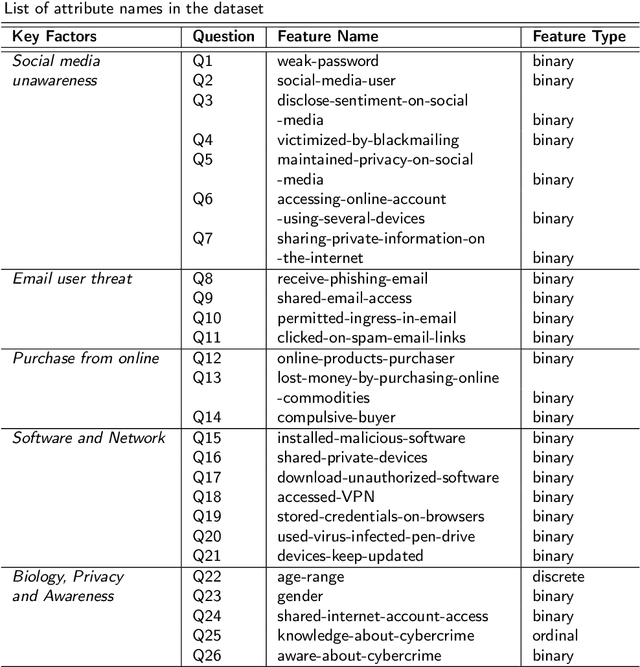
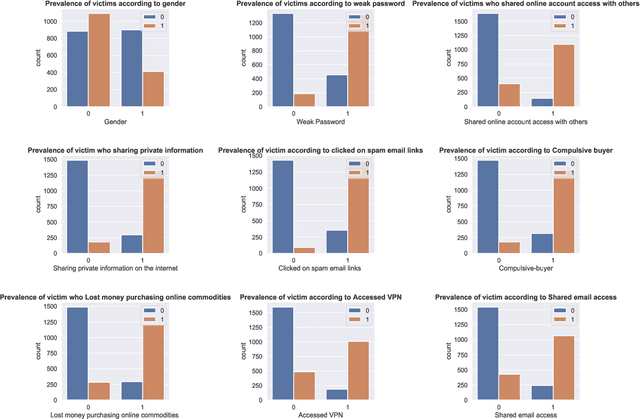
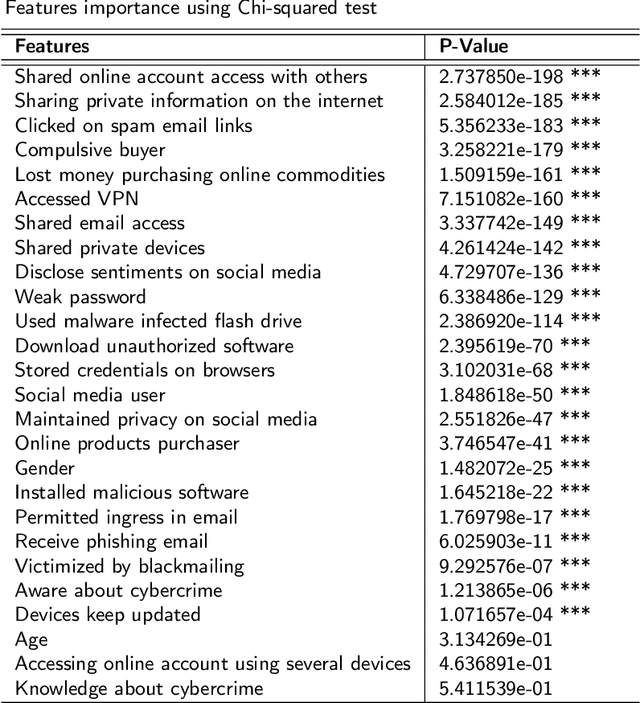
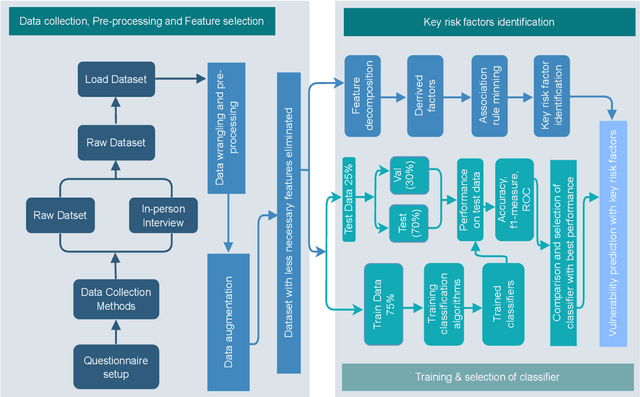
Abstract:Cyber risk refers to the risk of defacing reputation, monetary losses, or disruption of an organization or individuals, and this situation usually occurs by the unconscious use of cyber systems. The cyber risk is unhurriedly increasing day by day and it is right now a global threat. Developing countries like Bangladesh face major cyber risk challenges. The growing cyber threat worldwide focuses on the need for effective modeling to predict and manage the associated risk. This paper exhibits a Machine Learning(ML) based model for predicting individuals who may be victims of cyber attacks by analyzing socioeconomic factors. We collected the dataset from victims and non-victims of cyberattacks based on socio-demographic features. The study involved the development of a questionnaire to gather data, which was then used to measure the significance of features. Through data augmentation, the dataset was expanded to encompass 3286 entries, setting the stage for our investigation and modeling. Among several ML models with 19, 20, 21, and 26 features, we proposed a novel Pertinent Features Random Forest (RF) model, which achieved maximum accuracy with 20 features (95.95\%) and also demonstrated the association among the selected features using the Apriori algorithm with Confidence (above 80\%) according to the victim. We generated 10 important association rules and presented the framework that is rigorously evaluated on real-world datasets, demonstrating its potential to predict cyberattacks and associated risk factors effectively. Looking ahead, future efforts will be directed toward refining the predictive model's precision and delving into additional risk factors, to fortify the proposed framework's efficacy in navigating the complex terrain of cybersecurity threats.
Unleashing Modified Deep Learning Models in Efficient COVID19 Detection
Oct 21, 2023

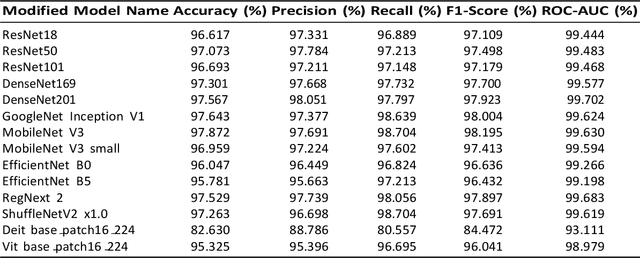

Abstract:The COVID19 pandemic, a unique and devastating respiratory disease outbreak, has affected global populations as the disease spreads rapidly. Recent Deep Learning breakthroughs may improve COVID19 prediction and forecasting as a tool of precise and fast detection, however, current methods are still being examined to achieve higher accuracy and precision. This study analyzed the collection contained 8055 CT image samples, 5427 of which were COVID cases and 2628 non COVID. The 9544 Xray samples included 4044 COVID patients and 5500 non COVID cases. The most accurate models are MobileNet V3 (97.872 percent), DenseNet201 (97.567 percent), and GoogleNet Inception V1 (97.643 percent). High accuracy indicates that these models can make many accurate predictions, as well as others, are also high for MobileNetV3 and DenseNet201. An extensive evaluation using accuracy, precision, and recall allows a comprehensive comparison to improve predictive models by combining loss optimization with scalable batch normalization in this study. Our analysis shows that these tactics improve model performance and resilience for advancing COVID19 prediction and detection and shows how Deep Learning can improve disease handling. The methods we suggest would strengthen healthcare systems, policymakers, and researchers to make educated decisions to reduce COVID19 and other contagious diseases. CCS CONCEPTS Covid,Deep Learning, Image Processing KEYWORDS Covid, Deep Learning, DenseNet201, MobileNet, ResNet, DenseNet, GoogleNet, Image Processing, Disease Detection.
 Add to Chrome
Add to Chrome Add to Firefox
Add to Firefox Add to Edge
Add to Edge